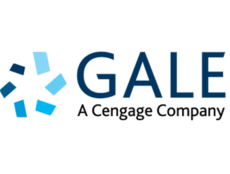
A new British study reports that eLearning for new doctors offers many benefits. The study emphasizes that in order for any eLearning program to work, however, one must pay careful attention to several factors. First, it is important to take user experience into account. Second, one must have widespread buy-in from participants, including supervisors. Third, providing time for young doctors to complete modules on the job and rewarding them for their completed work is also critical. These conclusions are based on a study of junior doctors enrolled in a required Foundation training program targeting early-career doctors.
In the past, British trainee doctors were required to spend three hours in continuing education each week. Today, across the United Kingdom, there is a growing move to offer these mandatory training sessions online using smartphone applications and other eLearning innovations. Among some of the key forms of education offered in Foundations are safe prescribing practices. To this end, Health Education England created SCRIPT, which is a web-based eLearning program to increase effective and rational prescribing. A 2017 study published by Hannah Brooks et al, “Perceptions and Impact of Mandatory eLearning for Foundation Trainee Doctors,” used the Kirkpatrick’s model of training evaluation to study trainee’s perceptions of the program and baseline results. Over all, Brooks’ study found that using eLearning in this context was highly effective.
What is SCRIPT?
As reported by Brooks et al., “SCRIPT eLearning comprises 48 modules across a range of specialities.” Notably, students are also able to download a certificate of completion once the successfully complete the test accompanying the unit. However, the key aim of SCRIPT is to encourage personal and self-driven learning on prescribing related topics.
Key Findings from the SCRIPT Study
Brooks and her colleagues used focus groups to assess the effectiveness of SCRIPT . In total, they spoke to 38 doctors from 14 medical schools in the UK and one medical school outside the UK. Over all, they found that eLearning for new doctors offers many benefits. Below are some of the study’s key findings.
First, many participants reported that their medical training had prepared them to prescribe but did not necessarily make them feel confident about their decisions. For this reason, at least some respondents suggested that it would have been beneficial to have a program like SCRIPT prior to starting their first job. Second, the study found that there were both benefits and drawbacks to making the program required or optional and asking trainees to complete the program on the job or on their own time. One of the key factors in the program success, however, turned out to be related to something not at all related to the learners but rather related to supervisors. a percentage of participants felt their supervisors and clinical educators didn’t value SCRIPT. Finally, and not surprisingly, user experience was a critical consideration. As Brooks and her colleagues conclude, many factors seem to influence users’ experiences, including but not limited to the relevance of content, reason for adopting the program, and personal learning styles.
eLearning for New Doctors Offers Many Benefits and Future Applications
eLearning for new doctors offers many benefits and may also have future applications. As Brooks explains, there is no question that moving forward, the success of such programs will likely rest on providing dedicated time to complete modules on the job. She also notes that since young doctors are very busy, it would be advantageous to “decrease the length of certain modules to provide bite-size chunks of information that allow trainees to complete the learning in a reasonable time.” While Brooks’ study focused on SCRIPT, future research may also consider how similar education can be used to promote









No Comments